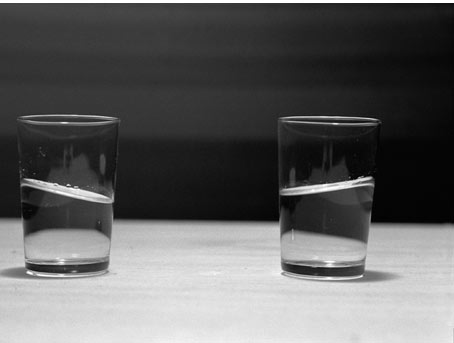
Slanting Water
Slanting Water applies an ordinary phenomenon under extraordinary conditions. A glass filled with water standing on a table is a fairly ordinary sight. The level of the water (the horizontal) and the vertical form the basis of our system of co-ordination — what mathematicians describe as x and y. However, while mathematical co-ordinates can be rotated, our everyday system of co-ordinates is less flexible. In Slanting Water , I present the possibility of an alternative system. I placed two glasses on a revolving table next to a camera. The camera has captured the hydraulics of the “closed system” — slanting water.
Slanting Water, black-and-white photo, 1995
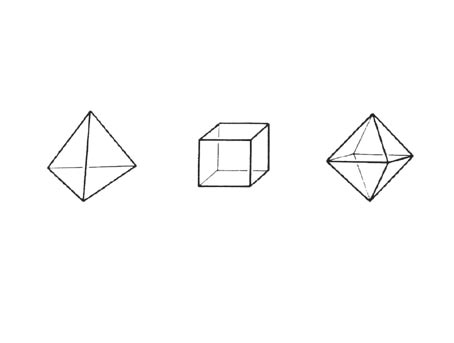
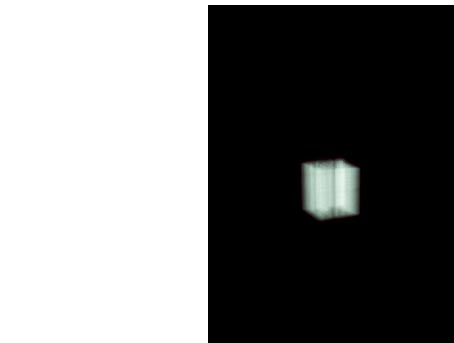

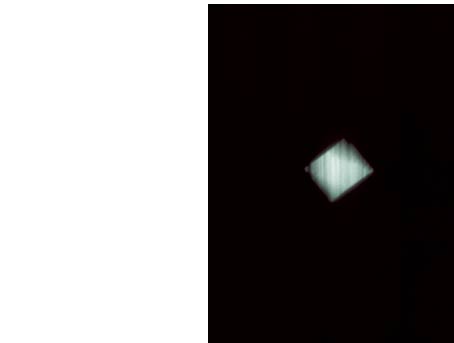

Three Solids
Three silo-shaped wooden boxes filled with sand hang down from the ceiling. Columns of sand fall from these boxes through grids of various shapes (triangle, square, rhomboid). As the sand falls, the same geometrical patterns are projected onto the columns by a light projector. The cross-section of falling sand and light creates 3-dimensional solids: tetrahedron, cube, octahedron — three of the five possible regular geometrical solids.
The diameter of each solid is approximately 5 cm and the contents of each box take one and a half hours to fall.
Three Solids, sand, projection, area variable, 1993

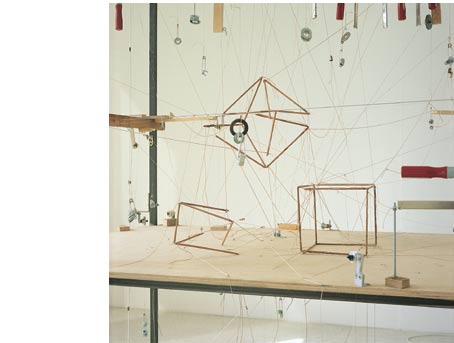

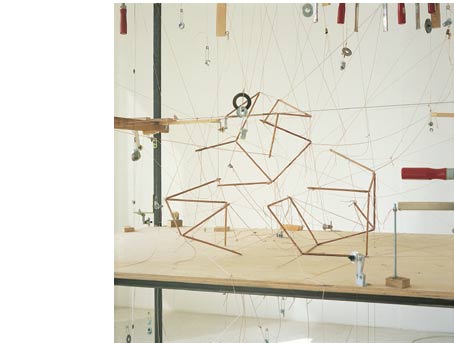
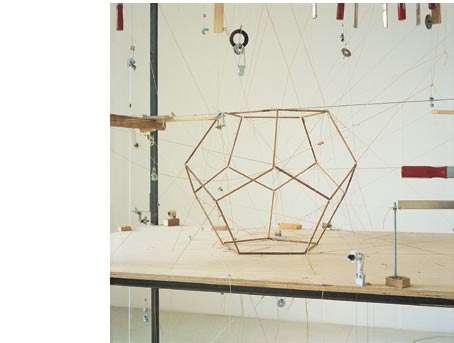
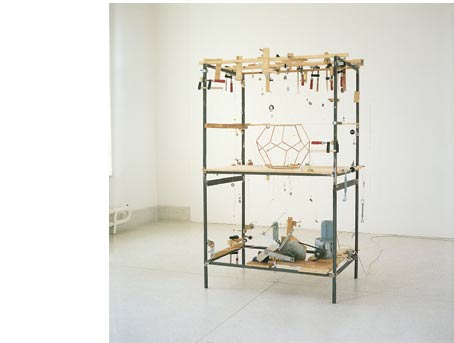
Platonic Love
There are only five regular solids in the universe: tetrahedron, cube, octahedron, dodecahedron and icosahedron. The first known description of these solids is found in the writings of Plato, hence the name “Platonic solids”. They all have a “neat” structure: they can all be inscribed within a sphere, and in each solid, all planes, edges and vertices are of the same size. This unique regularity may have inspired Plato to attribute a cosmological significance to these solids: he associated four of the solids with the four elements, while, in his system, the fifth became the foundation of the world.
Platonic Love is based on particular aspects of geometrical correspondence between the first two of the five solids, which I discovered by performing a simple mathematical equation: I counted the number of edges in a tetrahedron and in a cube. I found that a tetrahedron has exactly half as many edges as a cube. I therefore established the equation that 1 tetrahedron + 1 tetrahedron = 1 cube, as an experimental geometrical formula.
In order to create a visual representation, I constructed a moving model. The symmetrically positioned tetrahedra slowly unite into a cube, then the cube splits into two tetrahedra again. The duration of the restructuring between the two end stages is significantly longer than the moment in which the solids appear as distinct forms. This intermediate stage appears relatively unstructured, in that it displays a character which is difficult to define. If the motion were to be frozen in this intermediate stage, there would be little to suggest that the jumble of edges had any connection with a regular solid.
The tetrahedron and the cube are precisely defined solids, and therefore represent timeless geometrical relationships. They are connected by the temporality of the metamorphosis. The decreasing/increasing confusion of the intermediate forms does not satisfy the topology of regularity; their irregularity is, however, the result of a precisely calculated motion. Extracted from the continuity of motion, they might be regarded as half solids, or the embryonic forms of solids. If one looks instead at the continuity of motion, the whole of the metamorphosis may be regarded as a multi-directional, pulsating body, with two timeless forms at its end stages.
-
Attila Csörgo http://www.c3.hu/~acsorgo/

